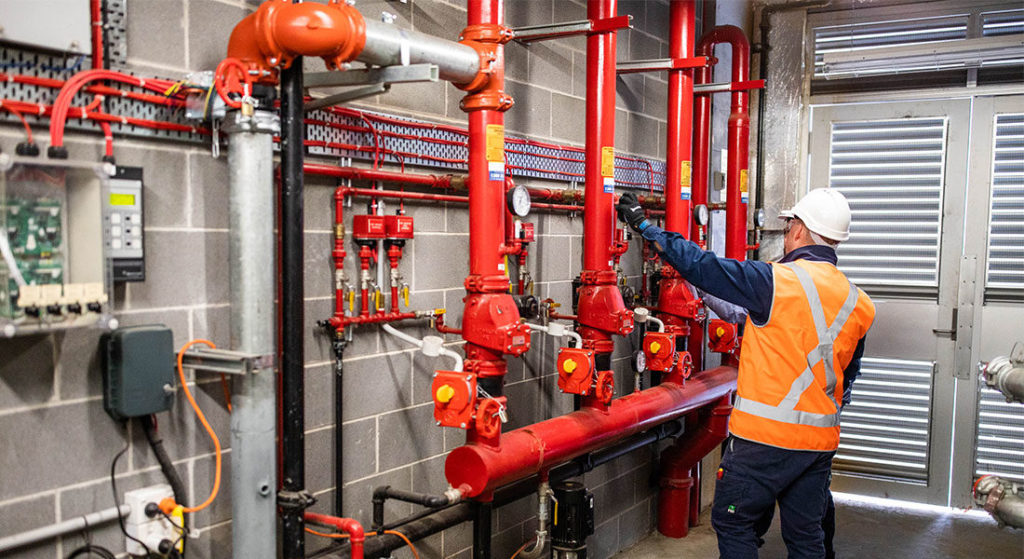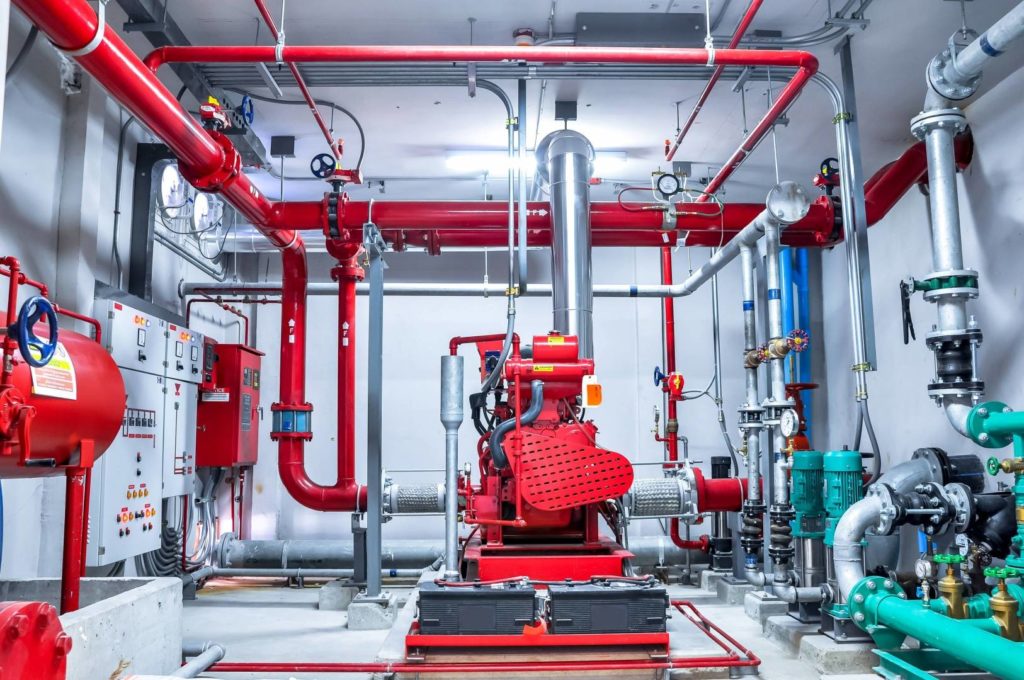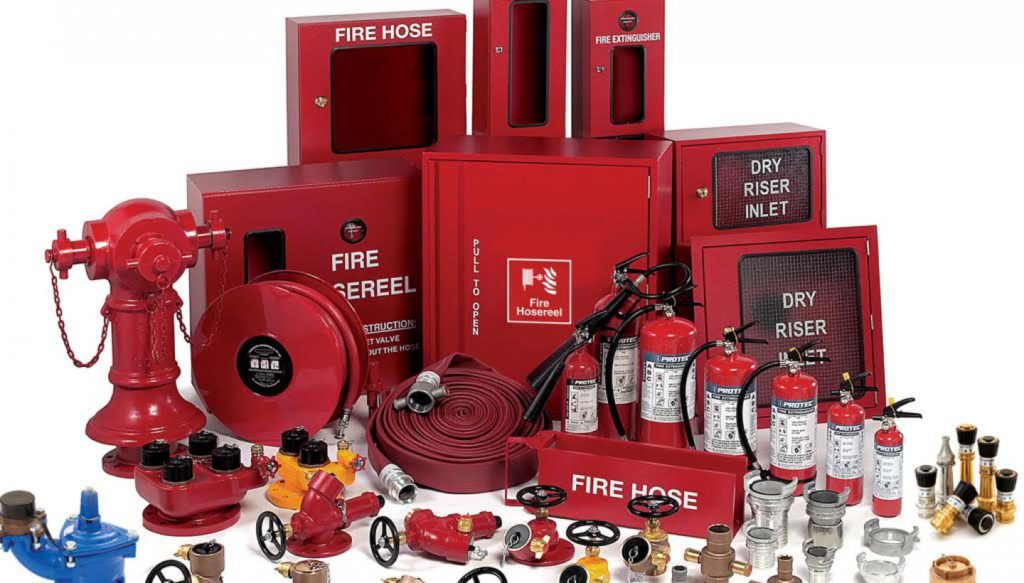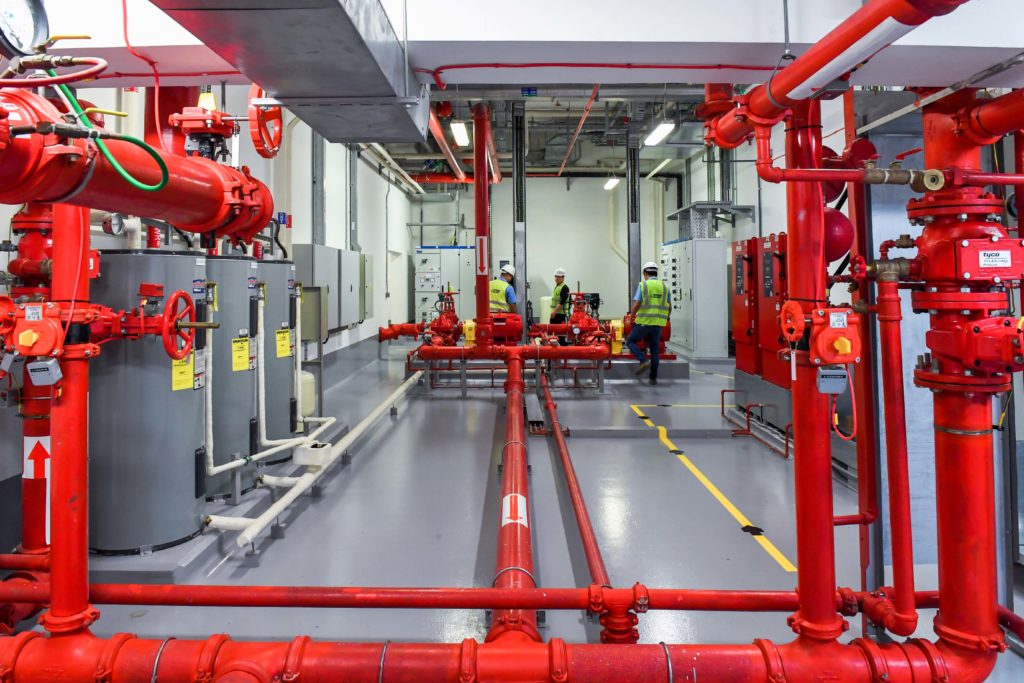Fire Control Extinguishing And Systems
• Gas Automatic Fire Suppression Systems
• FM200 Gas Fire Extinguishing Systems
• Novec1230 Gas Fire Extinguishing Systems
• Inert Gas Fire Suppression Systems
• CO2 Gas Fire Suppression Systems




Preliminary studies are carried out on the field by expert teams for fire extinguishing systems, projects are drawn, mechanical, electrical and evacuation systems plans are designed. When it is determined which gas, foam or water extinguishing system is suitable, hydraulic calculations are made. Since the fire system is produced in accordance with quality standards, necessary tests and controls are also carried out before delivery. After the installation of the installation, on-the-job training is given to the personnel on duty about the tested systems. Periodic maintenance and possible malfunctions of fire extinguishing systems are also done by expert teams.
Fire detection and warning system, fire extinguishing system, fire curtain, firestop products according to which resources or intermediate inputs are used in the energy sector.
should be used and the extinguishing agent that will interfere with the flames should be determined very well. Unprofessional installations can cause loss of life and property. Moreover, fires in the energy sector are very damaging to nature.
All fire extinguishing systems produced to TSE standards, energy distribution facilities, switchyards, nuclear and thermal power plants, HEPPs, gas and fuel oil tankers, ships and vehicles, filling facilities, generator rooms, refineries, wind energy generators, pipe valleys, overflow pools, and tank areas are installed in the appropriate one.
Before the installation, survey work should be done, if sprinkler will be used, the calculation should be kept and the hydraulic calculation should be done by experts. The gases to be used in the archives of such sites should be FE 25 or FE 227. The high pressure water mist extinguishing system is one of the suitable extinguishing systems.
It is more appropriate to use automatic fire extinguishing systems in tunnels. As for the reason; The fire that starts in the tunnels spreads extremely fast due to the air circulation. Both ends of the tunnels create a strait air and spread the fire rapidly to both sides. People who are in the tunnel at that moment, even if they are experts in fire extinguishing, head for the exit to save their lives. For these reasons, it is foreseen that the fire extinguishing system will be installed automatically and that it will respond quickly to the fire independently of people. If the automatic system makes the first intervention, it saves a lot of time until the firefighters arrive at the fire area.
Even if tunnel fire systems are not used, periodic maintenance, controls and tests should be carried out, deficiencies should be completed and malfunctions should be eliminated. An unresolved glitch can result in loss of life.
Researches on how to use a fire extinguishing system in tunnels have shown that the most appropriate way is to install the fire extinguishing system as a rail system on the ceiling of the tunnel, to quickly head to the fire area with the signal it will receive from the sensor and notification system, and to take the fire under control in a rapid manner. The rail extinguishing system to be laid more than one should send the closest one to the fire point when the warning signals come.
Another way is to lay the tunnel fire system to be laid centrally in sufficient numbers to each point and to arrange it in such a way that it does not leave any blind spots. In this method, the fire that started is intervened with instantaneous water cannons, and the fire is extinguished before it grows with the multiple method applied to the fire. The fire fighting vehicle, which makes manual intervention possible, can also be kept in a suitable place.
Since there is a large number of ammunition that can explode in a fire in the military sector, the most sensitive fire extinguishing systems produced should be used. All fire scenarios should be reviewed within the framework of sabotage plans, without skipping any details, so that billions of lira investments are not endangered.
The military sector, which should definitely be protected with master engineering products, should direct the fire response activities in accordance with the UN, NATO and TAF regulations. All maintenance, repairs and tests should be done by professional teams. In an industry where there should be no question of any malfunction, the smallest detail to be skipped can cause tremendous damage. Therefore, fire extinguishing works to be carried out in the military field should cover all survey works from production to assembly. Only in this way, an error-free rate can be achieved and the country’s interests are also taken into account.
It should be preferred primarily in terms of not harming the environment. It does not cause any chemical damage in case of any exposure during extinguishing activities. Not to damage the materials in the extinguished area during the intervention. Considering the material dimension, it is necessary to prefer an extinguishing system that is very profitable with its easy filling and costless structure.

